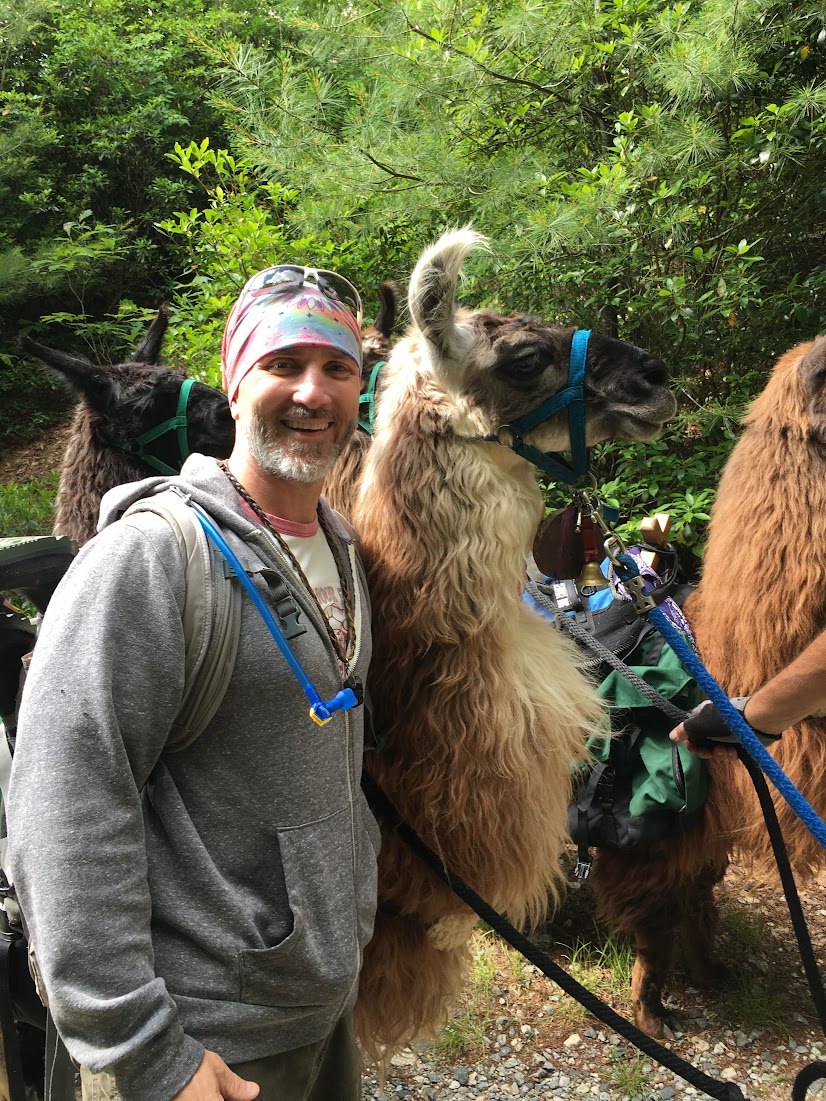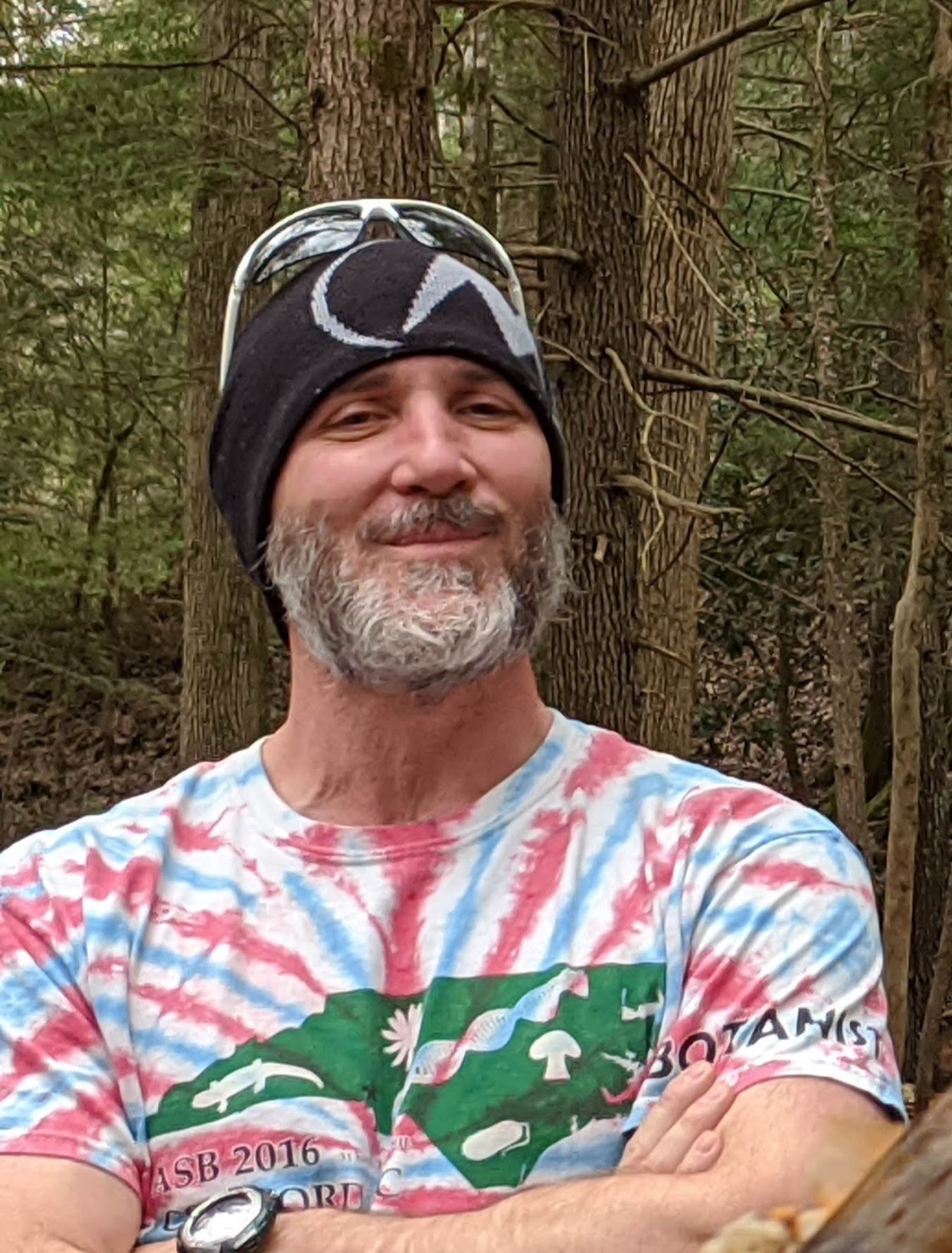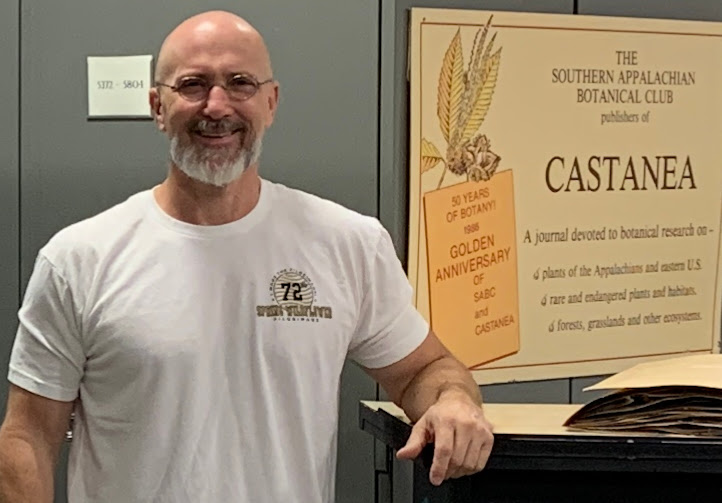HIGHLANDS BIOLOGICAL STATION
Dr. Joey Shaw: Plants, Plateaus, and a Passion for Teaching
Meet Dr. Joey Shaw—a plant lover, teacher, and researcher who splits his time between the University of Tennessee at Chattanooga and the Highlands Biological Station. Each summer, Joey brings students out into the forests, wetlands, and ridgelines of the Highlands Plateau to explore the region’s incredible biodiversity. Whether he’s helping students spot rare ferns on a trail or digitizing thousands of plant specimens back at UTC, Joey’s work is all about sharing the wonder of the natural world.
Read on to hear Joey’s thoughts on teaching at HBS, the projects he’s most excited about, and what inspires his love of plants.
Can you tell us a bit about your background and how it led you to both UT Chattanooga and the Highlands Biological Station?
While in graduate school at UT Knoxville in the early 2000s, I first learned about the Station and hoped to take a class or visit, though I never had the chance. My first real opportunity came in 2008, when my friend and fellow graduate schoolmate, Dwayne Estes, was teaching a class on graminoids. At the same time, we were beginning work on the Guide to the Vascular Plants of Tennessee. We decided I would attend his class, and together we spent a week developing the first draft keys to groups and species.
That week I met Jim Costa and mentioned I’d love to find a way to teach at HBS. A couple of years later, I followed up with Jim. At the time, he knew me best for my molecular work and suggested I teach a molecular methods course at Highlands. I still remember telling him, “I’ll teach whatever I need to in order to spend time at HBS—but I don’t want to spend the whole week in a lab!” Jim then asked if I’d consider teaching a fern course. Coincidentally, I had just written the fern keys for the Guide, so I enthusiastically agreed. I’ve had a foot in the door at HBS ever since.
What courses have you been teaching at HBS, and how do you choose your field sites around the Highlands Plateau?
I began by teaching Biology and Identification of Ferns every other year. Wanting to come annually, I later proposed Field to Database: Collecting Biodiversity Data in the Age of Global Digitization. This course emphasized field collection, pressing and mounting specimens, and digitizing them for global biodiversity data portals. Although it included fieldwork, much of the class kept me indoors, and I soon realized I wanted more outdoor teaching time.
I mentioned to Jim that I’d love to take over Paul Manos’ Vascular Flora of the Blue Ridge course if he ever stepped away from it. Jim instead noted that a wetland plants course hadn’t been offered in some time—and so in 2024, I launched the Wetland Plant Identification Workshop. It was a tremendous experience. Students ranged from beginners, some learning what a petal was, to advanced botanists eager to tackle the toughest groups, like sedges and rushes. The challenge of meeting such varied needs was intense but deeply rewarding.
Students then requested a sedge-focused course, and in 2025 I introduced the Sedges Plant Identification Workshop. It filled immediately, with so many on the waitlist we ended up offering it twice back-to-back that summer.
For all these courses, I choose field sites that maximize the diversity of species students can encounter. Panthertown Valley is one of my favorites—it’s a biodiversity hotspot with ferns, woody plants, sedges, and a mix of upland, forest, and wetland habitats.
Are there any current projects you’re particularly excited about?
This year I completed the Second Edition of the Guide to the Vascular Plants of Tennessee, which has been submitted to UT Press. Working on both editions has been an incredible journey, shaped by mentors, colleagues, and countless students.
Throughout the process, I’ve tested draft keys with hundreds of students at UT Chattanooga and HBS. Watching them use and interpret the keys has been invaluable—it highlights what works, what needs refinement, and ultimately makes the keys more accurate. That collaborative back-and-forth has been one of the most rewarding aspects of my work.
How does your work at Highlands Biological Station compare with your work at UTC?
Honestly, this question made me realize I approach my work the same way wherever I am. Teaching, learning, and conserving plant species and habitats is what drives me, especially since botany is often overlooked in education and underfunded in conservation.
Whether I’m at UTC, HBS, or directing the Spring Wildflower Pilgrimage in the Smokies (a role I’ve held since 2015), I’m always working to share knowledge, inspire curiosity, and encourage people to care about plants and their ecosystems.
What do you enjoy most about teaching at a field station like HBS?
I could write pages on this. Since my very first visit, I’ve loved HBS—not just the landscapes and biodiversity, but the people who make it special.
There’s something restorative about pulling into the Station parking lot, knowing you have a week or two ahead dedicated to learning, teaching, and self-growth. It’s hard work, yet somehow low pressure at the same time, and that balance is rare. The staff foster an environment where instructors and students can focus deeply without distraction.
Of course, the setting itself adds so much: high-elevation habitats, lush biodiversity, cool summer temperatures, and the surrounding protected lands. But ultimately, it’s the atmosphere of community and shared purpose that makes HBS so unique and rewarding.
How do your students—at UTC or HBS—shape or inspire your research and teaching?
My work is highly feedback-driven, and students are central to that process. Writing plant descriptions and identification keys is one thing—watching students apply them is another. Their successes confirm my language, and their missteps show me where I need to refine.
Each class gives me the chance to test, improve, and retest, making my work more accurate and accessible over time. Beyond that, it’s simply inspiring to spend time with people who are eager to deepen their understanding of the natural world. That shared pursuit enriches us all.
Looking ahead, what questions in botany or ecology are you most eager to explore?
Students have already asked me to expand into other challenging groups—like flat sedges or members of the sunflower family (Asteraceae). Developing workshops around these groups would not only serve students but also push my own research further.
I’m also interested in making plant species and habitats more approachable to broader audiences. Assigning ecological ranks—whether for habitat conservatism, threat level, or invasiveness—could help people without decades of training recognize the difference between the plants of a rare high-elevation bog and those in a thicket behind a shopping mall. Ultimately, I want to bridge the gap between technical botany and public understanding, so more people can appreciate the ecological stories plants tell.
September, 2025



